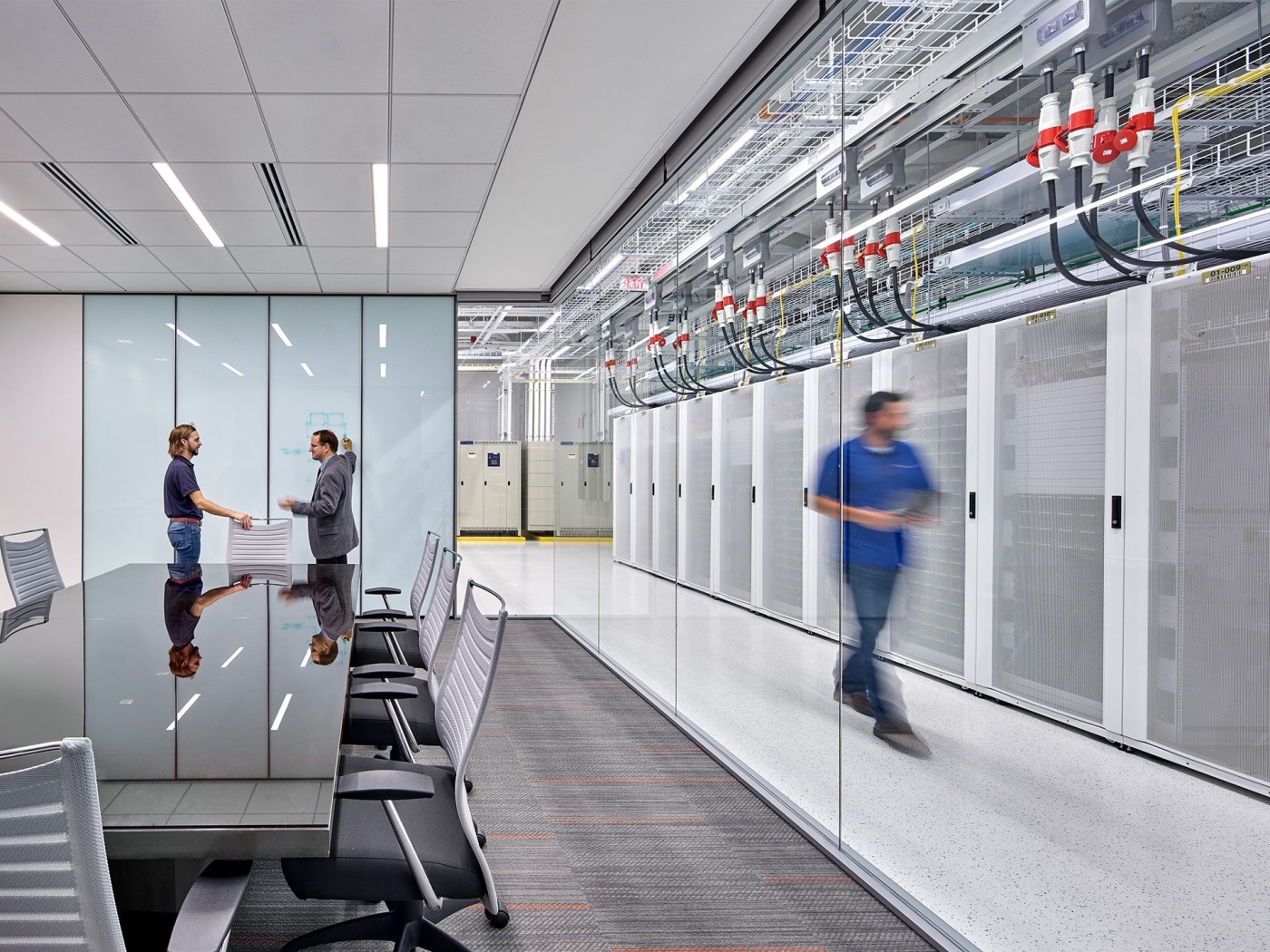This article will explore the evolving landscape of interconnection solutions, examining cutting-edge trends and innovations such as software-defined networking (SDN), network function virtualization (NFV), edge computing, artificial intelligence (AI), machine learning (ML), 5G, and quantum networking. It will highlight their significance in shaping modern networking architectures and discuss the advantages and challenges associated with these advancements.

Software-defined networking (SDN)
Software-defined networking (SDN) revolutionizes interconnection solutions by decoupling the control plane from the data plane, enabling centralized management and control of network resources. With SDN, organizations gain a new level of flexibility and agility in their network infrastructure.
Advantages of SDN
By decoupling network control from hardware, organizations can achieve greater scalability and flexibility in their interconnection architectures. SDN enables on-demand provisioning of network resources, reducing provisioning time and enabling more efficient resource utilization. Additionally, SDN-based interconnection solutions offer improved network visibility and analytics, allowing organizations to gain valuable insights into network traffic and performance.
Challenges and considerations in implementing SDN-based interconnection solutions
Organizations need to plan and design their SDN infrastructure carefully to ensure compatibility with existing networking technologies and devices. There may be a learning curve for network administrators who need to acquire new skills to manage and operate SDN-based interconnection solutions effectively. Security is also a critical aspect, as centralizing control in SDN introduces new attack vectors that need to be addressed with robust security measures.
Network function virtualization (NFV)
Network function virtualization (NFV) is a technology that virtualizes network functions, such as firewalls, routers, and load balancers, replacing traditional hardware appliances with software-based counterparts. In interconnection strategies.
Advantages of NFV
NVF enables organizations to deploy and manage network functions more efficiently, reducing the need for physical hardware and associated maintenance costs. NFV also allows for rapid provisioning and deployment of network services, enhancing agility and responsiveness in meeting changing business requirements.
Challenges and considerations in adopting NFV for interconnection purposes
Organizations need to ensure compatibility between virtualized network functions and their existing network infrastructure. They must also address concerns related to security, performance, and interoperability when implementing NFV-based interconnection solutions. Robust planning, careful evaluation of vendor offerings, and thorough testing are essential to ensure a successful and seamless transition to NFV.
Edge computing
Edge computing plays a crucial role in interconnection solutions by bringing data processing and storage closer to the network edge, near the source of data generation. This approach minimizes latency and improves the efficiency of data processing for various applications, including Internet of Things (IoT) devices, real-time analytics, and video streaming.
Advantages of leveraging edge computing
By minimizing the distance data needs to travel, edge computing significantly reduces latency, ensuring that the processing and analysis of data occur in near real-time. Additionally, edge computing offers the advantage of improved data processing capabilities. By distributing computing resources across edge nodes, organizations can offload computational tasks from centralized data centers, reducing the burden on the network infrastructure and enabling faster data processing.
Challenges and considerations in implementing edge computing in interconnection architectures
Organizations must carefully consider resource limitations at the edge, such as limited computing power and storage capacity. They need to address security concerns related to distributed computing resources and data synchronization across edge nodes. Managing and orchestrating a decentralized infrastructure requires robust systems and tools to ensure efficient operation and seamless integration with the broader network.
Artificial intelligence (AI) and machine learning (ML)
AI and ML are instrumental in enhancing interconnection performance through intelligent algorithms and data analysis. These technologies empower interconnection solutions to dynamically adapt to evolving network conditions, forecast traffic patterns, and optimize resource distribution. AI-driven traffic management systems, for instance, can intelligently direct data flows and allocate bandwidth in response to real-time demand, resulting in heightened network efficiency and diminished congestion.
Advantages of incorporating AI and ML in interconnection strategies
AI and ML enable interconnection solutions to analyze vast amounts of data generated by interconnected devices, extracting valuable insights and supporting predictive analytics. This empowers organizations to make data-driven decisions, anticipate network bottlenecks, and proactively address potential issues before they impact performance.
Challenges of incorporating AI and ML in interconnection strategies
That said, incorporating AI and ML in interconnection strategies also poses challenges. These include the need for extensive data sets for training ML models, ensuring the privacy and security of sensitive data used in AI algorithms, and addressing the complexity of integrating AI/ML capabilities into existing interconnection infrastructure. Additionally, organizations must consider the computational resources required to implement AI and ML technologies effectively.
Future technologies: 5G and quantum networking
The advent of 5G technology holds immense potential for transforming interconnection solutions. With its increased speed, lower latency, and higher capacity, 5G enables faster and more reliable connectivity between devices, creating new opportunities for interconnection. It opens doors for innovative applications such as autonomous vehicles, smart cities, and immersive virtual experiences, where seamless interconnection is critical.
Quantum networking, on the other hand, introduces a revolutionary approach to interconnection. Leveraging the principles of quantum physics, it promises ultra-secure communication and unprecedented computational capabilities.
Quantum networking can enable secure data transmission through quantum key distribution and enable quantum computing, which could revolutionize various industries. However, the implementation of quantum networking poses significant technical and infrastructure challenges due to the delicate nature of quantum systems.
Related Resources:
What You Need To Know About Interconnection In IT
Interconnection Types and Definitions
DataBank Interconnection





